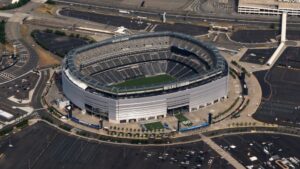Extreme Investor Network Blog:
“Climate Change Threatens Stadiums Around the Nation”
The recent devastation caused by Hurricane Milton at Tropicana Field in Tampa, Florida serves as a stark reminder of the vulnerability of sports stadiums to extreme weather events. The Tampa Bay Rays may be forced to find a new home for their upcoming season due to the extensive damage caused by the hurricane.
But it’s not just baseball stadiums facing risks – NFL stadiums are also at risk of climate-related losses. A report by Climate X projects that NFL stadiums could experience $11 billion in climate-related losses by 2050. This highlights the urgent need for state and local governments to address the impacts of climate change on sports infrastructure.
The risks extend beyond hurricane winds and flooding. The Arizona Diamondbacks, for example, are facing challenges in keeping fans and players cool in the scorching Phoenix heat. Meanwhile, the Minnesota Vikings experienced a roof collapse due to a massive snowstorm in 2010.
The report by Climate X ranks the vulnerability of NFL stadiums to climate hazards, with MetLife Stadium in East Rutherford, New Jersey projected to incur the biggest losses. The stadium’s low elevation and exposure to flooding and storm surge make it particularly susceptible to climate risks.
However, some teams are taking proactive measures to combat climate change. Allegiant Stadium in Las Vegas ran the Super Bowl entirely on renewable energy, while Mercedes Benz Stadium in Atlanta has implemented energy-efficient design to reduce electricity usage.
As the impacts of climate change become more pronounced, it is crucial for sports teams and stadium owners to prioritize adaptation measures to safeguard their infrastructure and ensure the long-term sustainability of the sports industry.
With the future of Tropicana Field in question and discussions of a new ballpark for the Rays on the horizon, the intersection of climate change and sports remains a pressing issue that requires immediate attention and action. Stay tuned to Extreme Investor Network for more updates on the latest developments in the world of business and climate change resilience.

